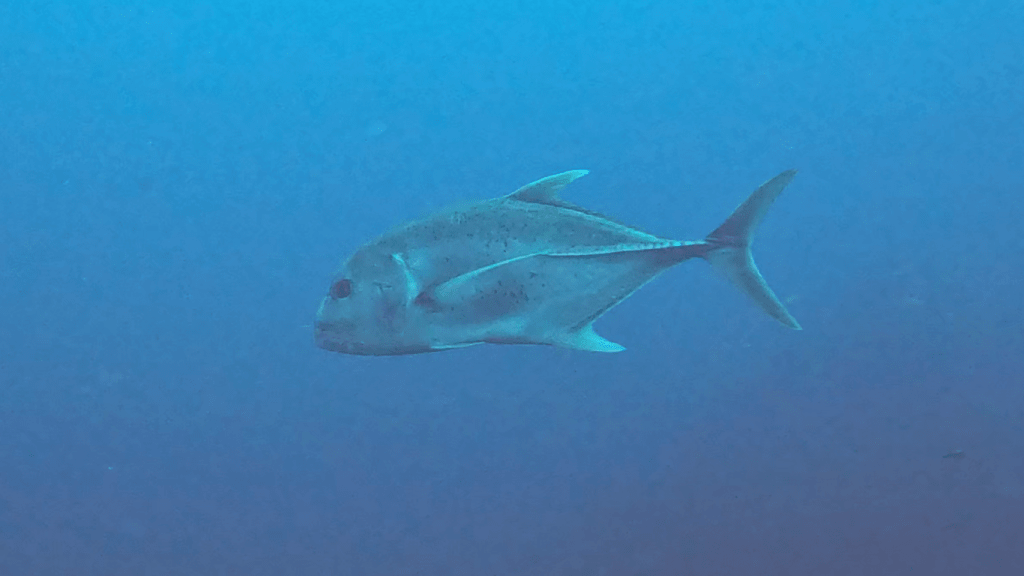Giant trevally

The Giant trevally (Caranx ignobilis), also known simply as Trevally, is a large fish from the jack family (Carangidae), characterized by its outstanding size and strength. Due to its impressive characteristics, it is a notable member of its genus, significantly large in size. Furthermore, the Giant trevally stands out not only for its size but also for its strength and the social behavior it exhibits, which changes throughout its life. This text will provide detailed information about the Giant trevally, describing its lifestyle, diet, and reproductive processes.
The body shape is oblong, relatively deep, and slightly compressed laterally. The skin is covered with small cycloid scales, except for the breast area which is typically scaleless. The head has a rounded snout; the length of the upper jaw extends to a vertical line passing through the posterior edge of the eye. The eyes are medium-sized, with a well-developed adipose eyelid. The mouth has a prominent row of large canines in the upper jaw and a single row of teeth in the lower jaw. The gill arches contain 6-9 gill rakers on the upper limb and 16-19 on the lower limb. There are two dorsal fins, the first with eight spines and the second with one spine [soft ray count missing from original text], as well as an anal fin with one spine and 16-17 soft rays [note: typically preceded by two embedded spines]. The pectoral fins are elongated and falcate (sickle-shaped). The lateral line forms a high arch in the anterior part of the body and runs straight towards the caudal peduncle. The caudal fin is falcate.
Body coloration varies from greenish to bluish or bluish-black above, and from silvery-white to yellowish or golden below. There is an oval black spot on the operculum and another on the lower part of the pectoral fins, while the lobes of the anal fin are entirely yellow. [Note: Spotting and fin coloration details can vary and may differ from typical C. ignobilis descriptions]. Juveniles usually have five dark bars on the sides of their body.
The maximum body length is 124 cm, averaging up to 75 cm, and the maximum weight reaches 32 kg. [Note: Maximum sizes reported elsewhere for C. ignobilis are often larger].
It can be argued that the trevally represents one of the few 'antediluvian' creatures that have survived with minimal changes since the age of dinosaurs. Ichthyological studies suggest that the species originated around 60 million years ago and has undergone practically no evolutionary changes.
Paleontologists have discovered fossilized remains of trevally in Cretaceous deposits at depths of up to 8 meters, corresponding to the Cretaceous period. The first fossilized remains were discovered in 1801, and similar findings have become frequent since then. A description of the fish in its current form was presented in the mid-19th century and included in the works of Carl Linnaeus. [Note: Linnaeus lived 1707-1778]. Despite the past 200 years, the appearance and characteristics of the fish have remained virtually unchanged, making its description relevant even today.
